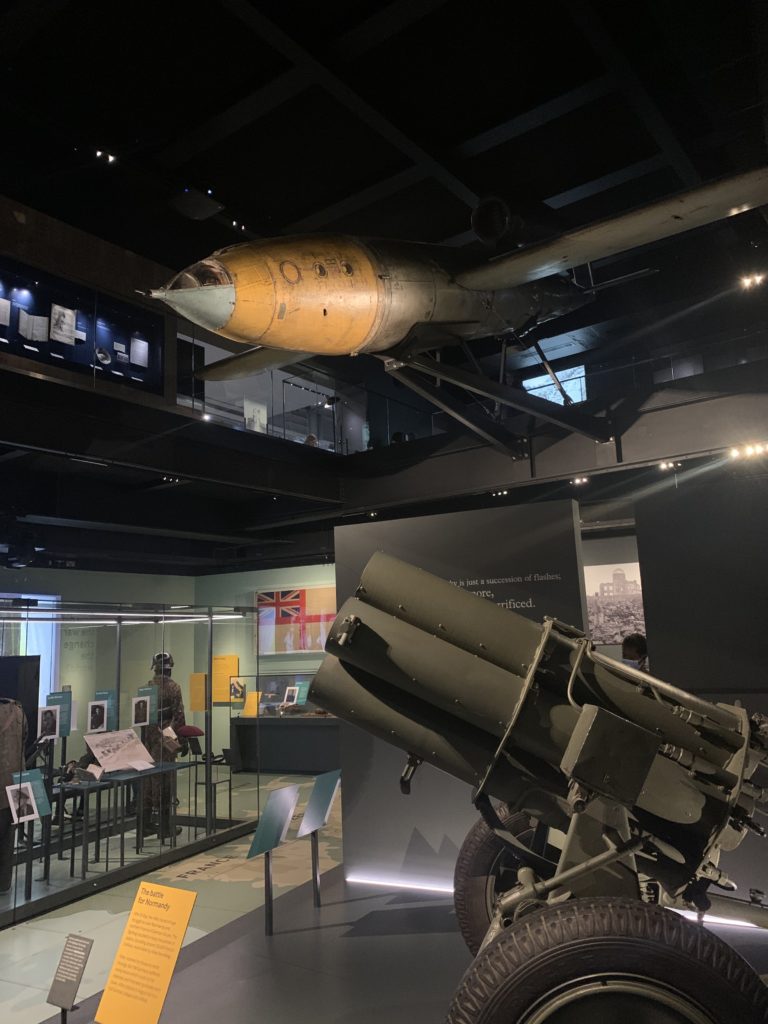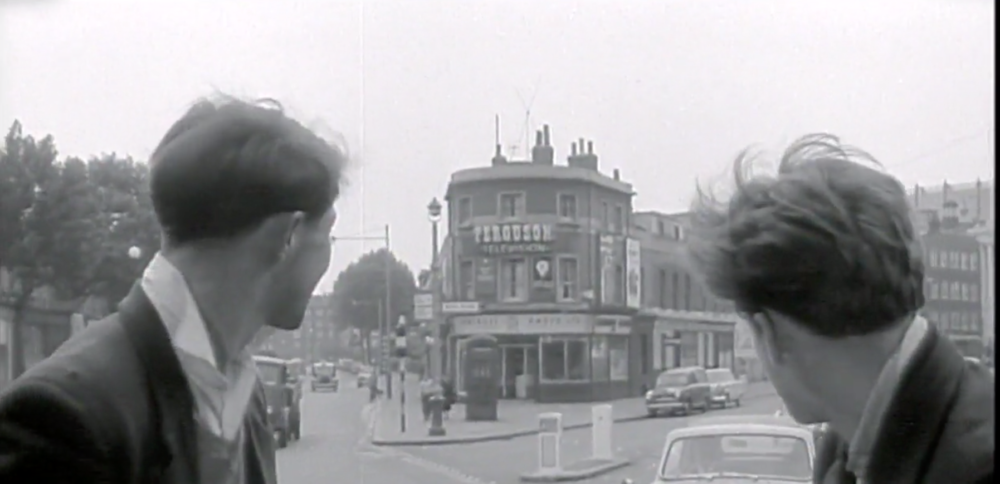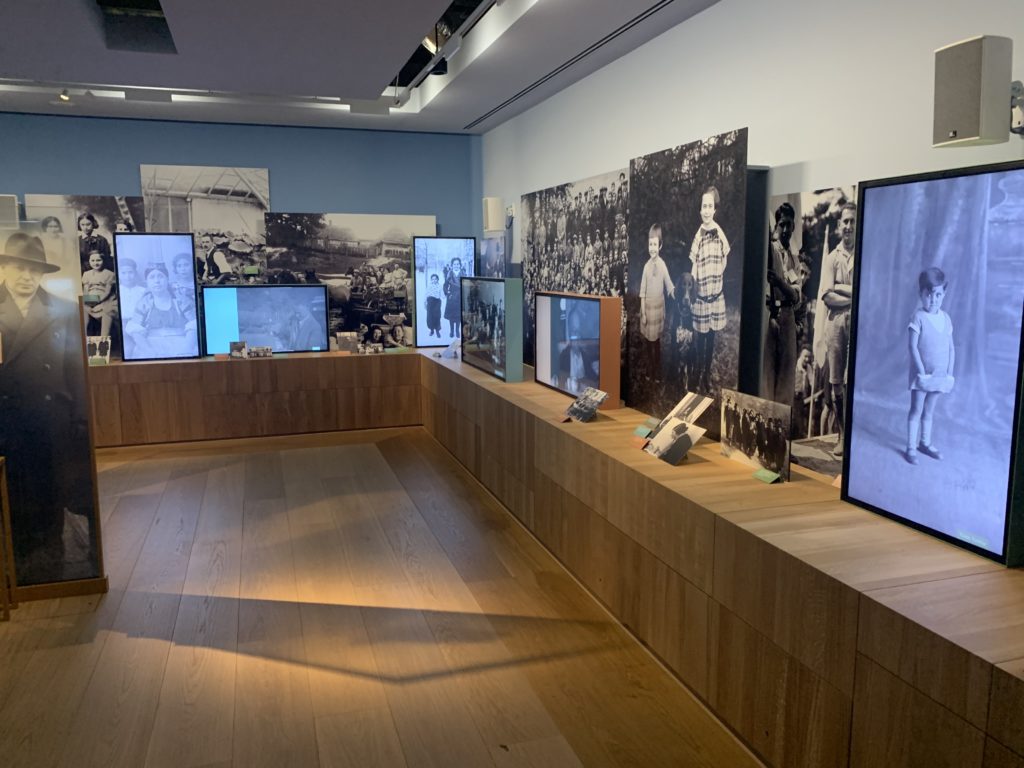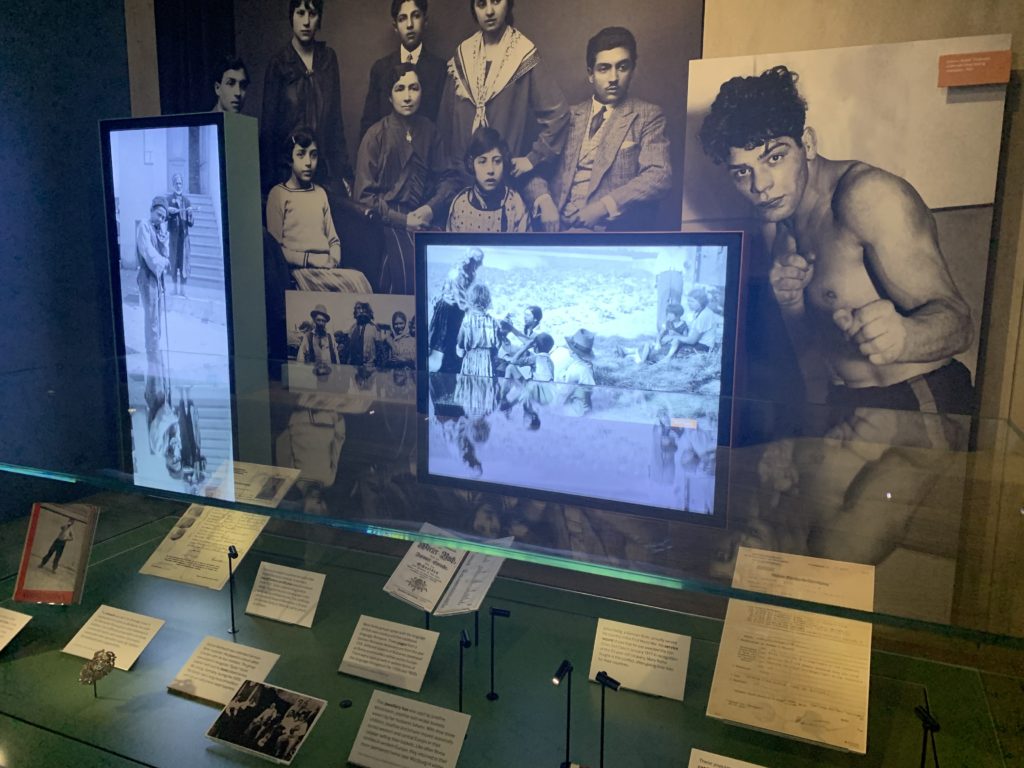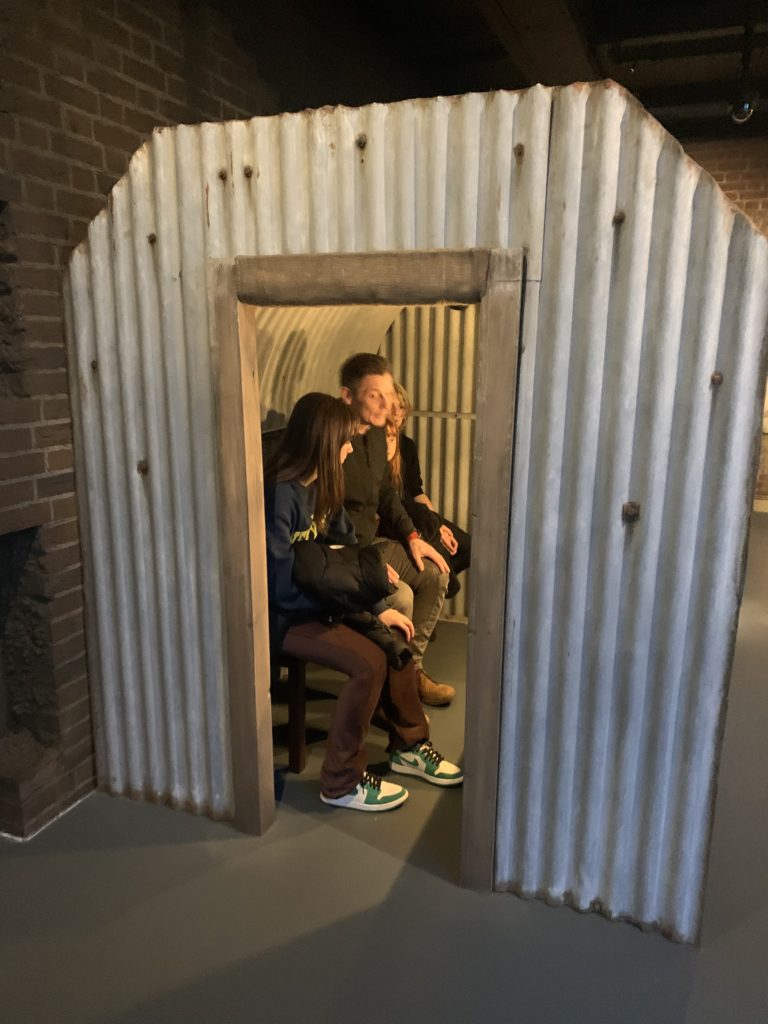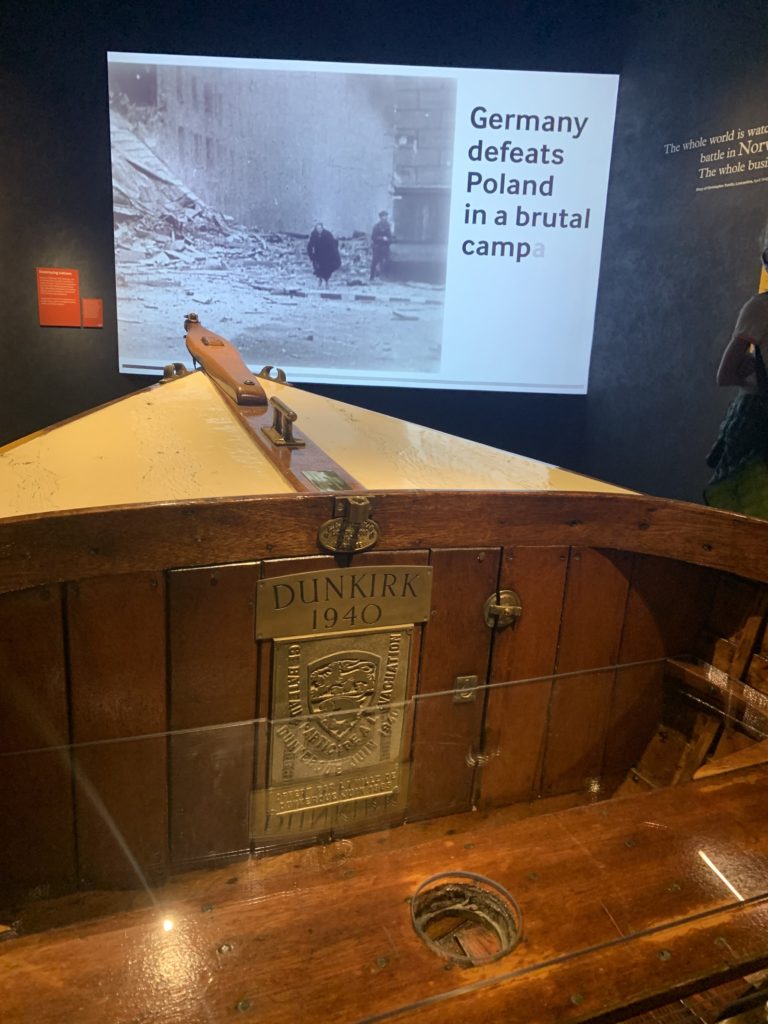Today we visited the brand new £30 million Holocaust/World War 2 Galleries at our very own world class Imperial War Museum. The IWM has always dedicated galleries to these events, but when the museum was closed they worked tirelessly to transform the areas into a much larger (over 3000sq. metres) space with much more interactive content. What they have done well here is what the IWM has always excelled at. Namely, focussing on the lives of people impacted by an event as opposed to the event itself.
The Holocaust galleries commence with an overview of Jewish life in central Europe in the 1920/30s. Brightly light rooms tell the stories of families and workers getting on with school, commuting and bar mitzvahs in the face of increasing discrimination. A transition room explains with frightening logic how Hitler became chancellor in 1933 and how life for Jews became incrementally more impossible as Germany grew closer to global conflict. The fate of Jews from 1939 to post war Europe is subsequently not presented in the graphic and grainy black and white images of death we have all seen before. Rather, we see photos of living green fields which thrive in places like Sobibor and Treblinka in Poland. Interwoven is the lived experience of survivors whose collective memories will soon become extinct, but have been persevered by the IWM.
The WW 2 galleries are a bit more of a task to take in, as they cover everything from action in the Africa to the Philippines. A whole museum could be dedicated to this, but IWM do their best to distil this into smaller elements focussed on human experiences on the front line and also people impacted on the home front. Various campaigns and victories are outlined and poignant detail is given to the efforts of troops and civilians on D Day. The huge scope of these galleries are made more accessible by the integration of devices such as a mock up of an early 40’s British home, clothing, music, air raid shelters, and the effect of the war on children who were evacuated from London. The final rooms are cogently dedicated to something usually overlooked by war memorials. Namely, how the world repaired itself after the event.
For those of you who are reluctant to visit the IMW out of a concern that it celebrates conflict and warfare, let us assure you that it doesn’t. As the galleries above indicate, it is more of a museum dedicated to collective survival in times of crisis and individual resilience in times of oppression. As conflict and warfare very much exist on this planet as we speak, it also introduces concepts of how we can help war ravaged people in the present.
The two galleries are permanent and free but are ticketed. You can get tickets on the day but to avoid waiting around it might be a good idea to book. If you are wondering about taking kids please not that these galleries are partially designed for children, but for under 11’s it might be a good idea to speak to them about what they are about to see.
While you’re swishing around the museum building brain cells you can also check out a small photographic exhibit from Oscar nominated photographer/filmmaker Wim Winders taken at ground zero in the weeks after the atrocity. The photos are large format and quite powerful. Afterwards we fully approve going to a Greater Kennington pub to obliterate all of those brain cells you just obtained.
